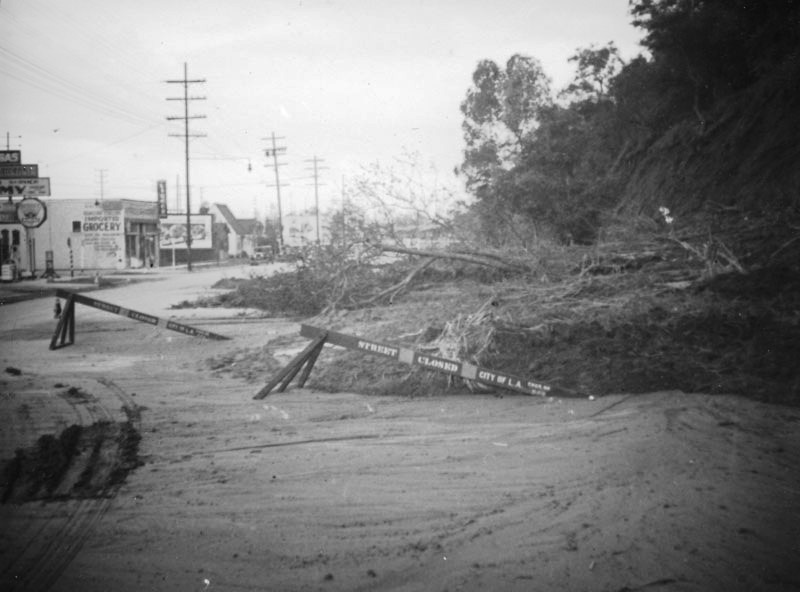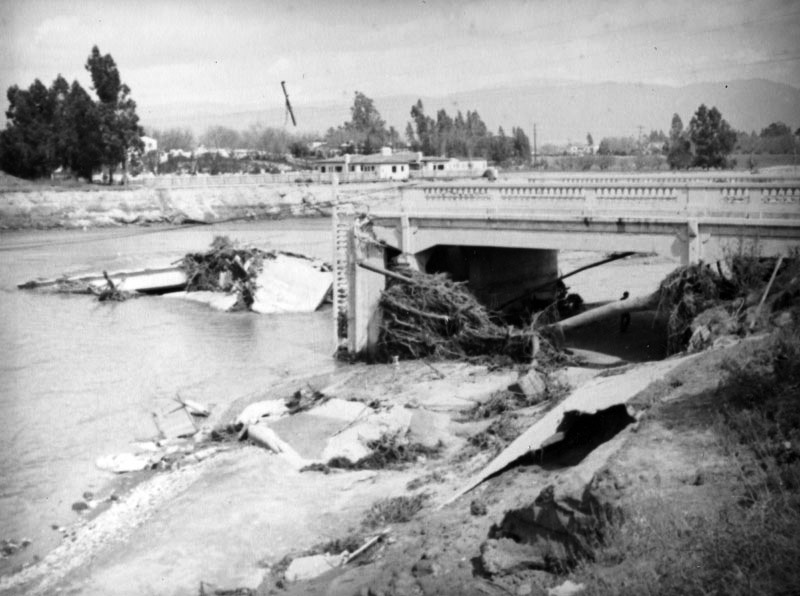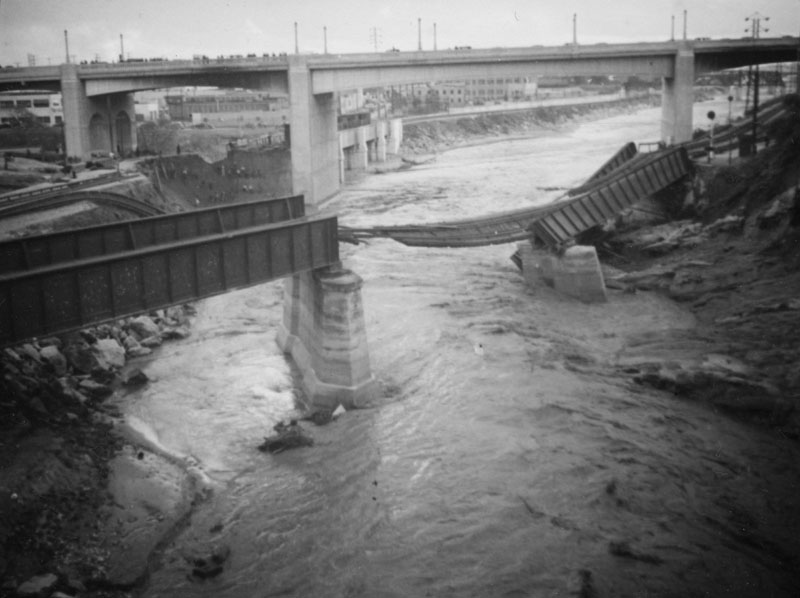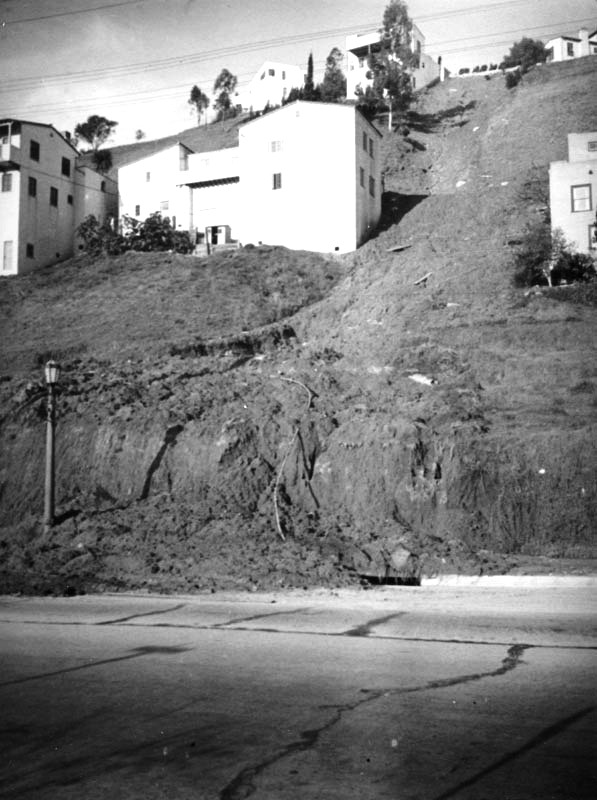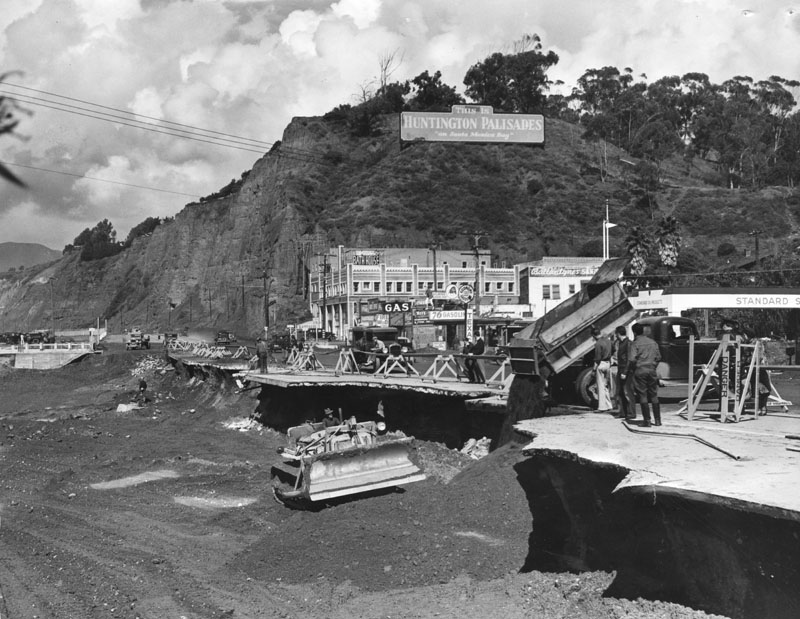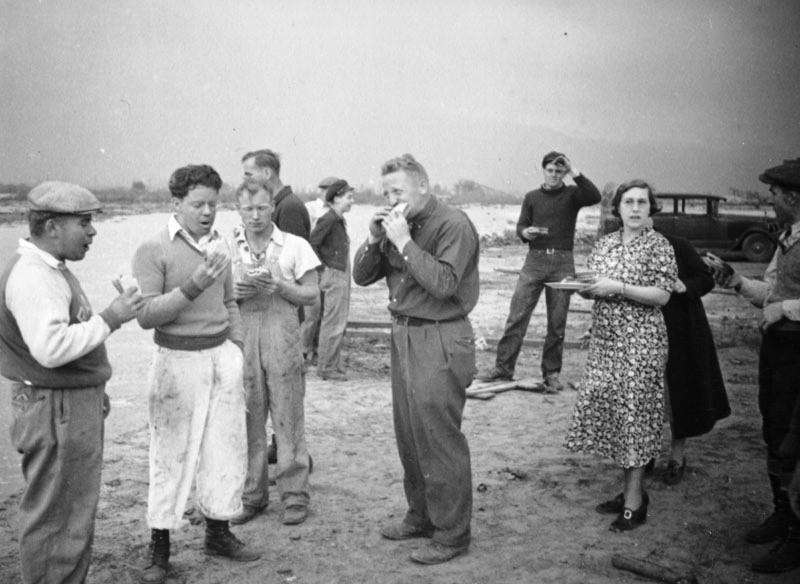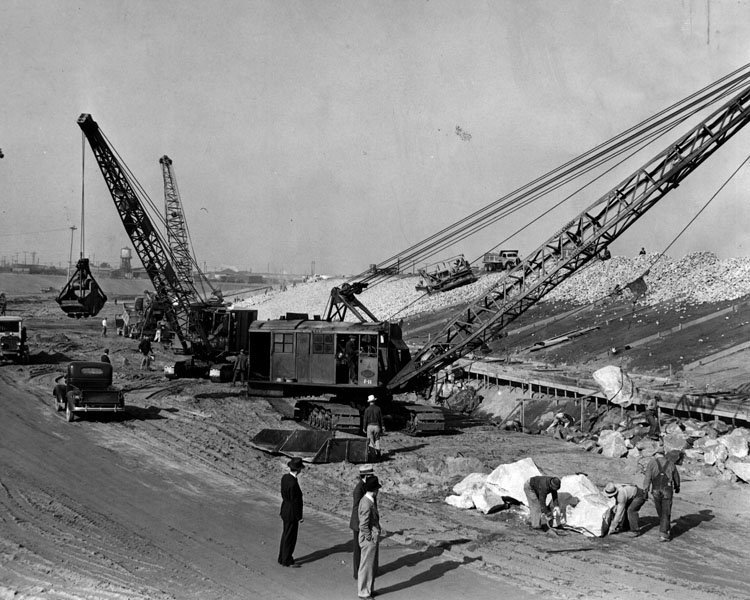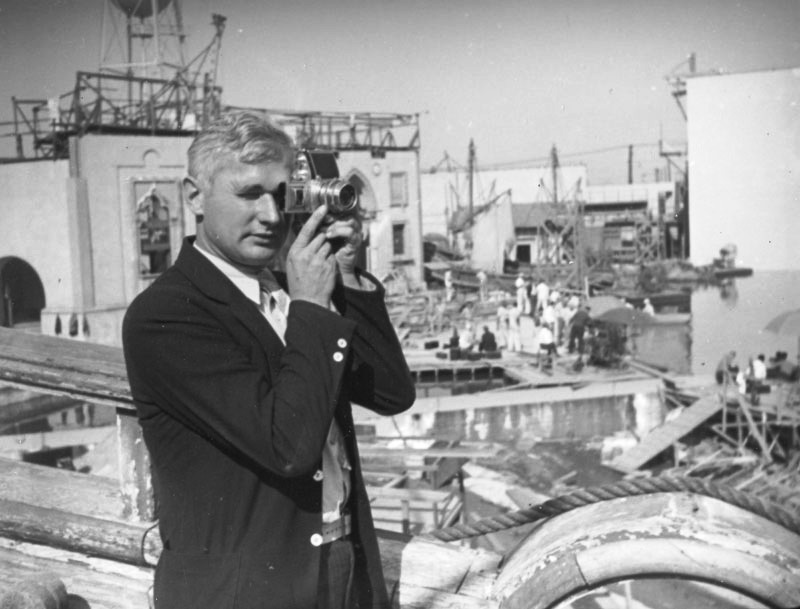Eighty years ago this month the greater Los Angeles area was hit by two massive storms resulting in a “50-year*” flood event. Rainwater from the sky combined with torrents cascading down mountain canyons to overwhelm the Los Angeles, San Gabriel, and Santa Ana Rivers, along with numerous smaller rivers and creeks. The resulting floodwaters inundated much of the Southland, swamped low-lying land with mud, and caused widespread destruction of homes, farms, bridges, and power lines. At least 115 people died. Several small towns east of Los Angeles were wiped off the map. As a result of the catastrophe, much stronger flood control measures were adopted and the character of the Los Angeles basin was forever changed.
*a flood of a size to be expected only once in fifty years.
A man and his camera
Herman Schultheis was a young German immigrant and photographer who, with his wife, moved from New York to Los Angeles in 1937 to find work in the studios. By early 1938 he had obtained a position at The Walt Disney Company, at the old Hyperion Avenue Studios close to the course of the Los Angeles River in Silver Lake. Schultheis is remembered for his contributions to special effects photography at Disney, including work on the films Pinocchio and Fantasia. He is also known for a mysterious notebook he kept detailing some of the processes used on these films and for his equally mysterious death in the jungles of Guatemala in 1955. But we’ll save those stories for another day.
When the waters came down, Schultheis was on the scene with camera in hand. In fact his job at Disney began just as the first of the two storms hit. The photo collection of the Los Angeles Public Library contains nearly 6,000 digitized Schultheis photos, many of them of the receding flood waters and the damage they caused. As still photos, they only begin to tell the tale of the disaster. (All photos by Herman J. Schultheis, 1938, unless otherwise indicated.)
We have attempted to recreate some of Schultheis’s shots. The “now” photos clearly show the effects of both flood-control efforts and new transportation corridors on the landscape of a city.
This pair of photos show the Arroyo Seco in Highland Park at the point where the East Avenue 43 Bridge was completely washed out by floodwaters and the adjacent roadbed heavily degraded. The second photo must have been taken after the bridge debris had been cleared. Schultheis Collection, #00099605 and #00099603.
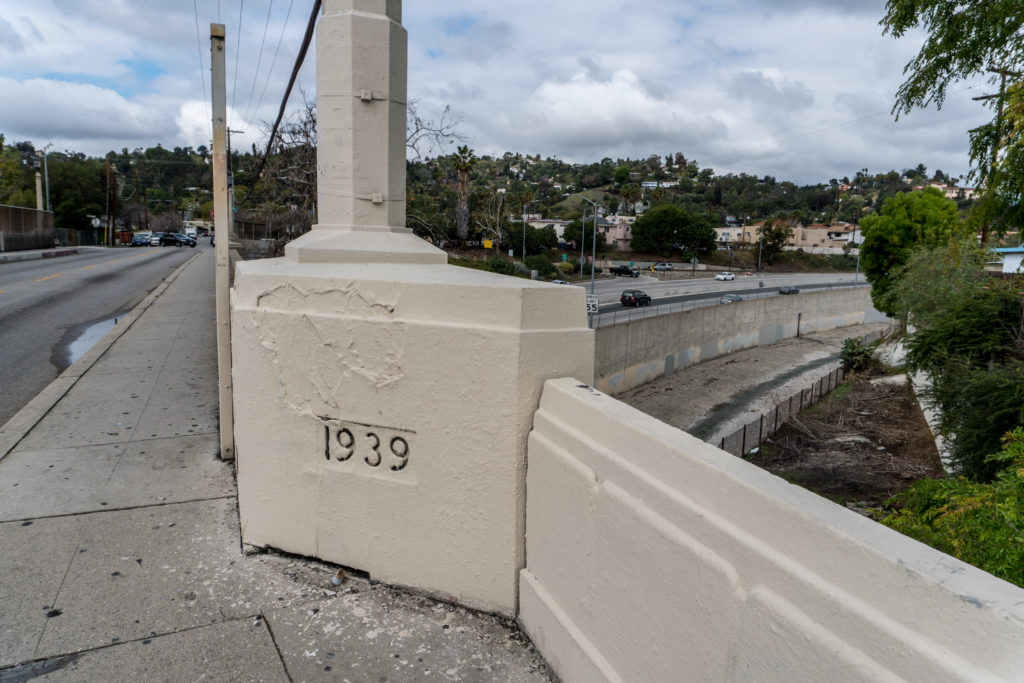
In 1939 a new bridge was dedicated — one that extended not only over the Arroyo, but also over the newly built Arroyo Seco Parkway (Pasadena Freeway), the first freeway in California. The Arroyo Seco itself, on the right, has been channelized in concrete, as was the entire L.A. River system following the 1938 flood. The bridge is immediately adjacent to the Lummis Home and Garden, the subject of another LAPL Photo Friends blog post. Photo: Alan Humphrey, 2018.
Riverside Drive, sandwiched between the Los Angeles River and Elysian Park, took a massive hit from flooding and mudslides. Schultheis Collection, #00082329.

Roughly the same spot as above. The Golden State Freeway, to the right, makes it impossible to get Schultheis’s angle. Our “best guess” intersection is Riverside and Fernleaf, facing southeast. Photo: Alan Humphrey, 2018.
The Lankershim Bridge across the Los Angeles River was destroyed except for a 20-foot stretch on the south side. Schultheis Collection, #00099542.
Four of Schultheis’s flood photos feature a dachshund, in spots ranging from El Monte to North Hollywood. Could this perhaps be the photographer’s own dog on the stub of the Lankershim Bridge? Across the channel, Lankershim and Cahuenga Boulevards come together in a vain attempt to cross the river. Schultheis Collection, #00099539.
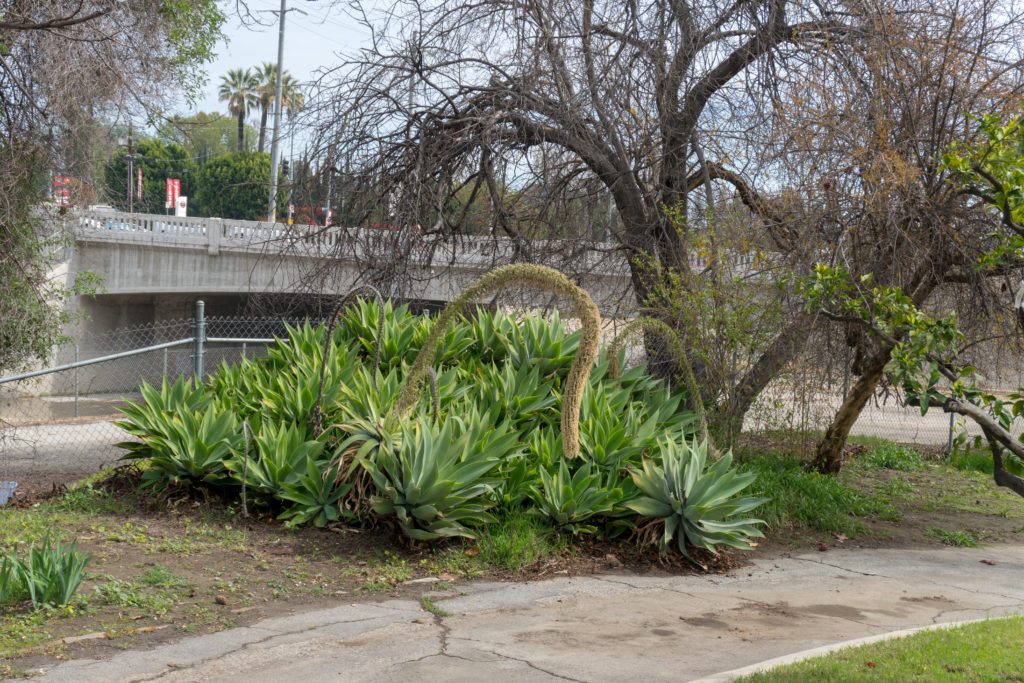
The new Lankershim span. The trickle of water that is the Los Angeles River can be seen in its concrete channel. Photo: Alan Humphrey, 2018.
The Southern Pacific railroad bridge at Dayton Avenue (a portion of Figueroa Street) hangs twisting over the swollen Los Angeles River along with railroad tracks. The Figueroa Street Viaduct, only just constructed as part of the planned Arroyo Seco Parkway, is in the background. Schultheis likely took this picture from the deck of the Dayton Avenue traffic bridge, at that time called the Riverside-Dayton Avenue Bridge. Clear as mud? Schultheis Collection, #00082304.
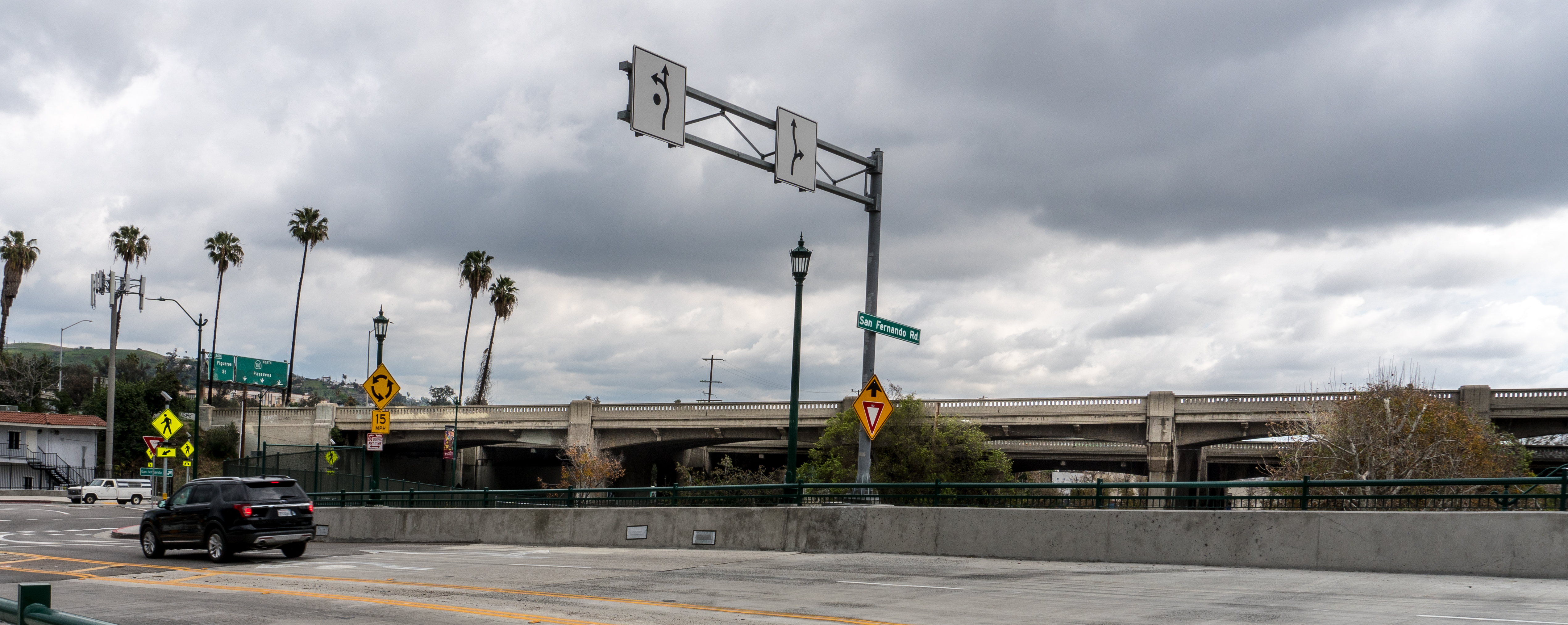
Multiple new transportation corridors, including the Golden State Freeway, make it impossible to safely capture the low-lying railroad bridge today. The old Figueroa Street Viaduct, now part of the Arroyo Seco Parkway, in the background, appears substantially the same as in the historic image. The bridge in the foreground was newly built in 2017, replacing the old Dayton Avenue traffic bridge, or the Riverside-Dayton Avenue Bridge, or the Riverside Drive Bridge. In sum, the current bridge is the fourth iteration of a bridge at this point. Photo: Alan Humphrey, 2018.
A massive landslide swept down on Hyperion Boulevard in the Silver Lake neighborhood (and very close to the old Disney Hyperion Avenue Studios.) Amazingly the houses in the photo survived where many elsewhere were destroyed. The contemporary photo below shows that both the center home and the one to its left remain to this day. Schultheis Collection, #00082317.
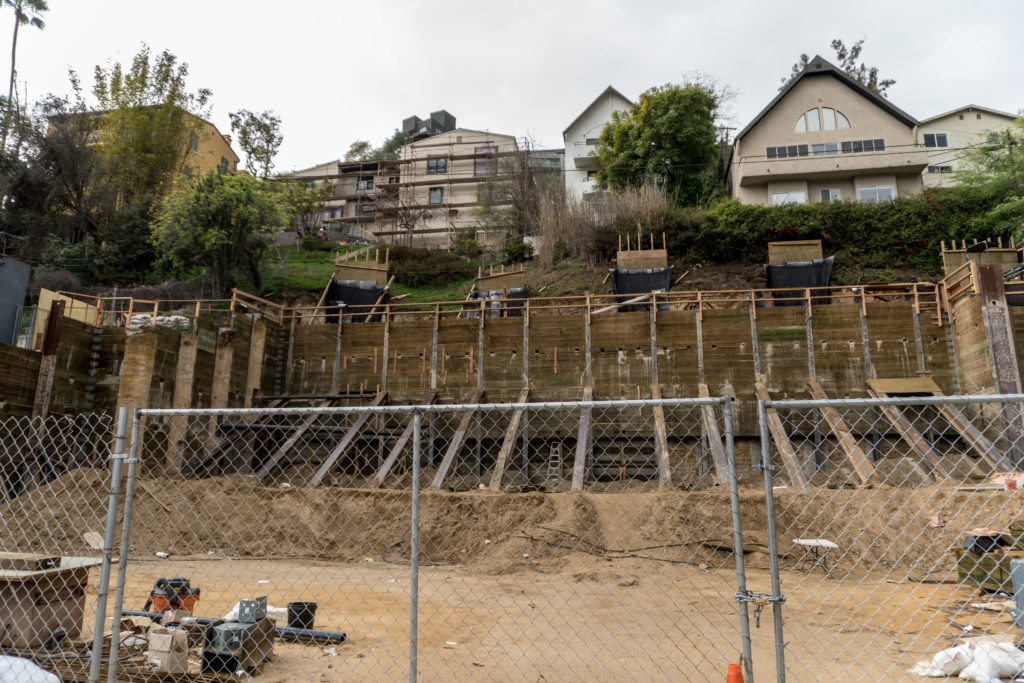
A lesson learned. The developer constructing new homes on Hyperion Avenue is buttressing the hillside. Photo: Alan Humphrey, 2018.
Pacific Coast Highway (then called the Roosevelt Highway) suffered heavy damage from the floodwaters. Crews work to stabilize the roadbed where Santa Monica Canyon Creek and Rustic Creek come together. Herald-Examiner Collection, photographer unknown, 1938, #00028399.
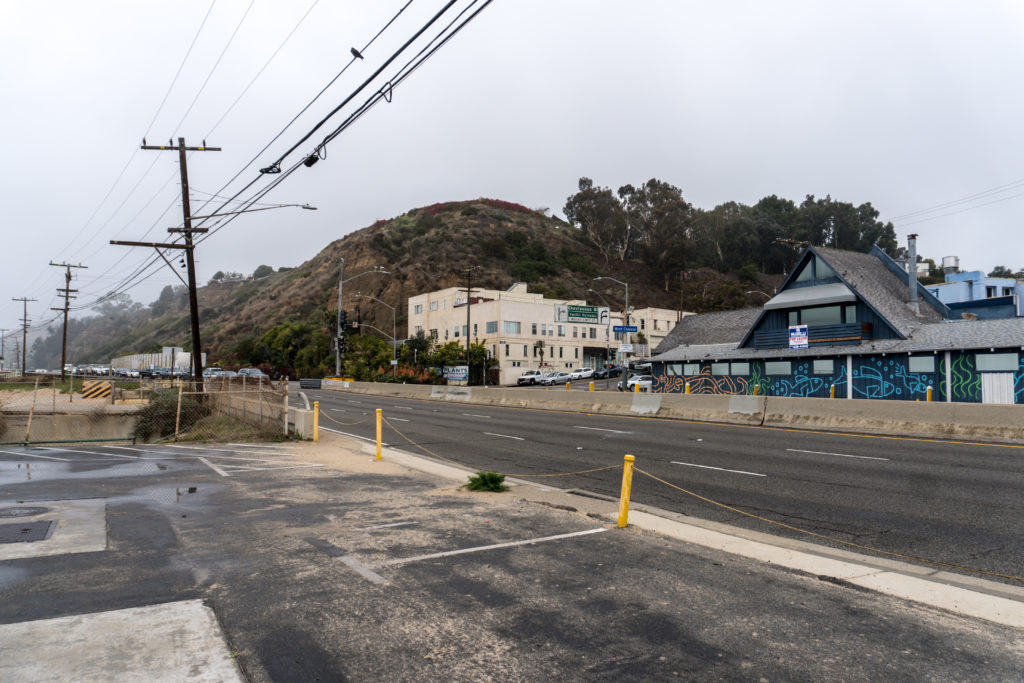
Our contemporary photo shows that the large building against the hillside still stands. A portion of the concrete creek channel can be seen on the beach side of the highway. The sign announcing the community of Huntington Palisades is gone and the hillside appears somewhat diminished. Today a pedestrian tunnel connects the cliff side to the beach. Photo: Alan Humphrey, 2018.
Schultheis and his wife visited a hog farm in El Monte where flood waters left behind a muddy mess and destroyed farm structures. Here Schultheis photographed relief workers on a break. Schultheis Collection, #00099523.
A few folks didn’t mind the muck. Schultheis Collection, #00099521.
After the deluge
In the wake of the 1938 flood, authorities went to work in earnest to prevent another disaster; the U.S. Corps of Engineers got into the act, channelizing the Los Angeles River into concrete troughs. In addition, bridges were rebuilt, flood control dams constructed, and Los Angeles’s famous deep street curbs installed. But recent extreme weather events in the Southland raise the question: is it enough?
Men begin the job of mucking out the Los Angeles River in North Hollywood. Schultheis Collection, #00099556.
Later stages of the flood control project undertaken by the Army Corps of Engineers, south of downtown Los Angeles. Boulders are being placed in the river channel. Herald-Examiner Collection, #00045099. December 2, 1938.
As for our photographer — Herman Schultheis was a talented and ambitious man who struggled to find a toe-hold in “the industry.” After only three years at Disney he was asked to move on. Disney had money concerns, and Herman’s German citizenship as war loomed may not have helped matters. In 1955 Schultheis took his camera to Guatemala to photograph the ruins at Tikal and disappeared. Some 18 months later his remains were found in the jungle. In many ways his life mirrored that of the down and out songster (minus the 747):
Didn’t think before deciding what to do
Oh, that talk of opportunities, TV breaks and movies
Rang true, sure rang true
Seems I’ve often heard that kind of talk before
It never rains in California, but girl, don’t they warn ya?
It pours, man, it pours
Sources include:
- Christina Rice, editor, How We Worked, How We Played: Herman Schultheis and Los Angeles in the 1930s, Los Angeles Public Library, Photo Friends, 2016.
- John Canemaker, The Lost Notebook: Herman Schultheis and The Secrets of Walt Disney’s Movie Magic, Art Institute Library, 2014.
- Adrian Glick Kudler, “9 Views of the LA River Today and Before It Was Paved in 1938,” Curbed Los Angeles, August 19, 2015 (https://la.curbed.com/2015/8/19/9936922/la-river-before-concrete-after).
- Scott Harrison, “From the Archives: 1938 storms changes [sic] Los Angeles River,” Los Angeles Times Archives (http://www.latimes.com/visuals/photography/la-me-fw-archives-1938-storms-change-los-angeles-river-20180116-htmlstory.html).




